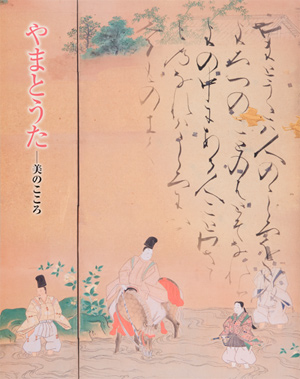| image | information |
|---|---|
 |
“Yamato-uta are composed by the many words born from people’s hearts, as leaves grow from seeds. The people use these words dexterously to express their thoughts about what they see or hear.” Our country, blessed with rich climate throughout the four seasons, has cultivated keen and subtle sensitivity of the people, and developed a culture in which this is expressed within a 31 character waka poem. The above words by Ki no Tsurayuki, which are the first words in the foreword of the anthology Kokin Wakashu, are known as the best words to define waka to the present day. This year is the 1100th year since Kokin Wakashu was edited, and 800 years since the Shin Kokin Wakashu was edited. Waka has greatly influenced Japanese culture in a variety of aspects, and the Kokin Wakashu and Shin Kokin Wakashu have been widely popular as the core of the waka world along with the Manyoshu. Kokin Wakashu was the first anthology compiled by Imperial command, in this case Emperor Daigo, edited by Ki no Tsurayuki and others. About 1100 waka poems were divided by themes such as seasons, celebrations or love, and these became the model for the later waka anthology divisions. The Shin Kokin Wakashu was edited by Fujiwara no Sadaie and others, under the orders of Ex-emperor Gotoba-in, with about 2000 waka poems. The symbolic expressions based on classical works such as the Manyoshu, including techniques such as “honkadori” (usage of earlier poem words) create a suggestive, fascinating beauty, which influenced Renga and Noh dramas, and also make waka study active. In this exhibition, we will introduce the beauty of the words and decoration born from the various ideas toward waka, such as the heart of appreciation and the heart of design, through the Kokin Wakashu and Shin Kokin Wakashu. We hope our visitors will be able to attain a new understanding on the beauty of our country's unique culture through the spirit of Yamato-uta. |